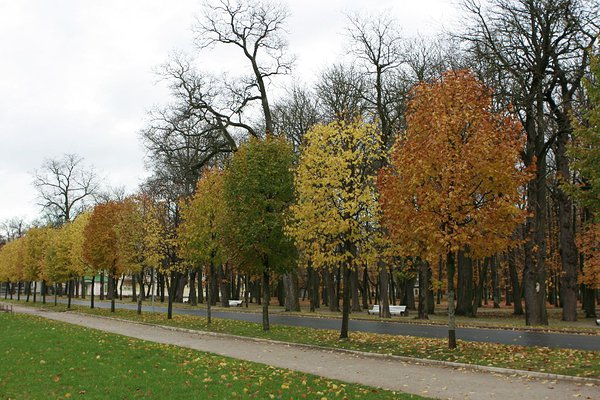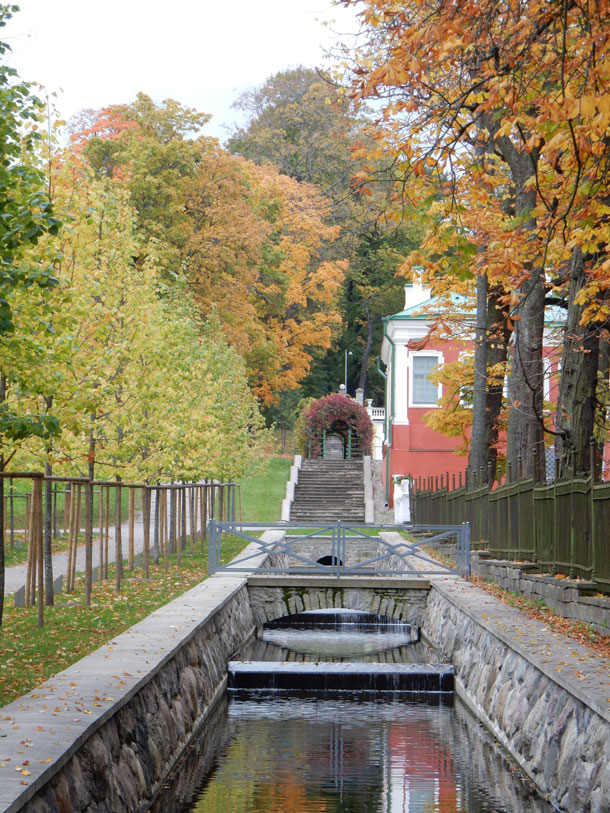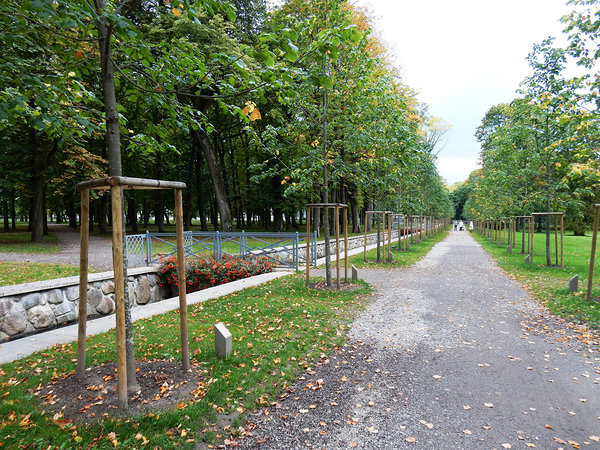Lower Garden and its canals
One of the first tasks undertaken in 1718 was the construction of
the regular garden, or Lower Garden and the canals in front the
palace. The Lower Garden had a complex outline: crisscrossing
avenues, shaded paths, semi-circular gazebos, cabinets with carefully
trimmed hedges, fountains, sculptures, flower vases, intricately
patterned parterre flower beds. All this was surrounded on
three sides by a stone-lined canal spanned by balustraded bridges.
After the death of Peter the Great in 1725 the construction works
slowed down, some of the already delivered sculptures and fountains
were removed and regular maintenance discontinued. The
Lower Garden eventually grew into semi-wild wooded parkland,
which appealed to the Romanticist idea of the beauty of untouched
nature. The 19th-century holidaymakers appreciated shade and
calmness in their resorts.
The water supply of Kadriorg’s canals and fountains was based on
a complex system similar to that of Peterhof, which is functional to
this day. The water came from Lake Ülemiste via a two-kilometre
canal dug to the very edge of the Lasnamäe klint. The water level
was regulated with a system of sluices and the water was conducted
through underground pipes and conduits down to the park and then along the Liiva stream to the sea. The water fell from the Lasnamäe klint in a scenic waterfall (near the location of the Kumu Art Museum). Unfortunately the piping system of the fountains fell out of repair in the end of the 18th century, and most of the old cast iron pipes were dug up and sold as scrap in the 1880s.
By 2012, the canal surrounding the garden was reconstructed; the
southern and northern walkways by the channel were renovated in
2013–2014.


